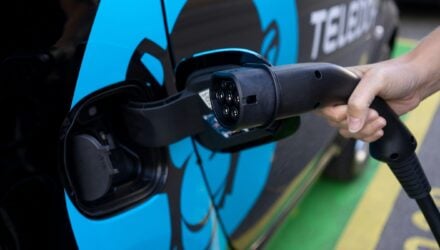Electric vehicles (EVs) are increasingly on our roads and with that comes changes to how we fuel and manage them, moving away from traditional forecourts to almost anywhere with an electrical outlet. While the number of public charging stations is growing rapidly, around 80% of EV charging takes place at home.
Often home charging is a convenient, low-cost way to fuel vehicles for businesses; employees can charge their vehicles overnight, top them up during the day, and claim any expenses incurred. However, without a well thought out plan and proper procedures in place this can become a convoluted process, with companies having to come up with ad-hoc processes to manage pay and reclaim. These policies must be fair for both the company and employee to avoid friction or saddling either with unnecessary expenses or administrative overhead.
So, what are some of the key challenges when businesses that operate fleets utilise home charging, and how can they overcome them?
Home charging that is suitable for all needs
Integrating home charging presents businesses with a new set of concerns, for example, businesses now need to understand the personal circumstances of their drivers; whether they can they charge at home and if they have off-street parking? Do they have permission to install a charger on their property?
This information could allow companies to successfully integrate an EV fleet and save them thousands of pounds but getting that information and keeping it up to date could be tricky and, for drivers, might feel invasive.
Practical considerations
To charge an EV at home, the vehicle would either plug directly into an electrical outlet in the employee’s garage or use a specialised charging station installed in the home. Using a standard plug means that charging is done directly from the mains which should be reserved for occasional use as it can be slow enough that a vehicle may not fully charge overnight. It is therefore not suitable for larger vehicles. Specialised charging stations such as a wall box are therefore preferable, but come with their own challenges: can a company mandate that a wall box must be installed? What happens if the driver rents their property and their landlord won’t allow them to have a wall box fitted? Where would the charger be installed if the employee lives in a block of flats or a house without a garage or off-street parking? What would happen if the equipment were installed and then the driver leaves the company?
These are questions that companies and their drivers will have to work out in collaboration. While many changes to a workplace can be imposed from the top down, when blurring lines between work and home life, companies should only do so with the consent of everybody involved. People have very different circumstances, not all of them will be compatible with home charging for EVs, and companies will have to adapt to this.
Issuing EVs to employees who either have or can have home charging units installed, while providing internal combustion engine vehicles to those without chargers, may work as a stopgap, but eventually EVs will become standard for many businesses.
Not all chargers are created equal
Some employees may already have a home charging unit installed but not all are compatible with every vehicle. That means that a business may find themselves paying to uninstall an incompatible charger, adding to the cost of providing a new one. Currently EVs will have either a Type 1 or Type 2 connection, and adapters can cost upwards of £150.
Many chargers are simply devices for getting electricity from the grid to a vehicle’s battery, but commercial EVs need more flexible and business-focussed technology, particularly if they are larger and more energy-hungry. Drivers need a way to be reimbursed for the electricity that they use to charge their vehicles, and this very important. Many newer charging points are “connected”, allowing fleets to see how much electricity their drivers are using and reimburse them accordingly. Some energy companies offer ‘type-of-use’ tariffs made specifically for EVs that enable employees to separate their vehicle charging costs from household costs.
Making electric fleets work
These solutions are already outdated however, with forward-thinking companies working in commercial EV charging launching home charging solutions that coordinate payments between energy companies, drivers and fleet managers much more easily. This is because the cost of charging is paid directly from the business to the driver’s energy company, with no requirement for drivers to submit expenses to be repaid. Their solution is hardware agnostic and is compatible with most smart chargers.
The UK government currently offers a number of grants for UK businesses, homeowners and even renters and landlords to install home charging points. These grants can provide up to 75% towards the costs of installing home charge points, though the scheme for individual homeowners has recently closed. There are also companies who can lease and rent home chargers, which may provide extra flexibility and thereby negate many of the challenges that adopting home charging can incur.
The realities of running fully electric fleets are still being worked out, and the fleets of 2030 will operate in a different way to those today, but there are workable solutions to home charging that benefits drivers and fleets alike.
To learn more about solutions that will help, visit: https://www.allstarcard.co.uk/
Author: Tom Rowlands, Managing Director, Global EV Solutions at FLEETCOR



















